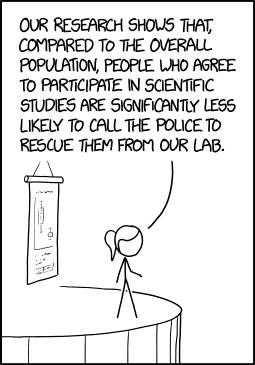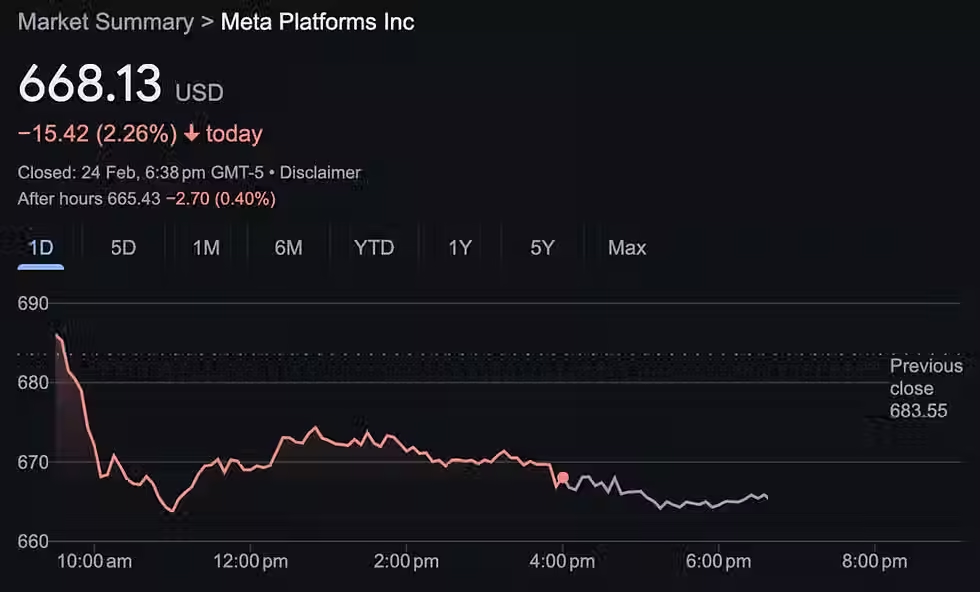The Five Stages of Stock Market Bubble
- Buffett Online School

- Oct 30, 2023
- 5 min read

As investors, we must always be knowledgeable and keep up with field trends. That’s why understanding the stock market bubble can also help us be more competent in our actions.
At Buffett Online School, we also believe in investing in great companies you understand, and utilizing Free Investing Resources to help you start your financial freedom and investment journey is one of the best ways to learn.
In this article, we will discuss the stock market bubble’s definition, types, and different stages so you can be more aware of this situation in your investing journey. Chloe Lin also shared a quick TikTok video about the stages of the market bubble that you can check to understand this topic quickly.
What is a Stock Market Bubble
A stock market bubble is a situation where stock prices rapidly increase followed by a sharp decline, but the essential parts of the companies, like revenue, profits, and plans, stay mostly the same.
Typically, prices surge quickly and substantially, surpassing their previous values in a short timeframe. Conversely, the drop is swift when they decline and often goes below the initial starting prices.
These bubbles can impact the entire stock market or a particular sector, like specific industries or geographic areas. They usually occur when investors overestimate the worth of stocks, either by miscalculating the actual value of the companies behind them or by trading based on factors unrelated to their intrinsic value.
What Causes Stock Market Bubble
A stock market bubble leads to people purchasing many products, which is usually reckless. Here are some of the causes of a stock market bubble:
1. Investor Sentiment and Herd Behavior
Investor sentiment and psychology cause stock bubbles
Investor sentiment creates a feedback loop of rising prices and increased buying.
When multiple investors buy a particular product or stock, it pressures others to do the same.
Social pressures and trend-following behaviors in the stock market contribute to heightened buying activity.
This phenomenon is known as "Herd Mentality" and is a significant factor in the formation of Stock Bubbles.
2. Emergence of Innovative Technology
New technologies and products can trigger Stock Market Bubbles.
The release of cutting-edge gadgets generates excitement and increases
demand. Investors are eager to invest in innovations, leading to price surges for related products.
The excitement surrounding innovation contributes to the creation of Stock Bubbles.
3. Impact of Low-Interest Rates
Low-interest rates can encourage borrowing for spending, expansion, and investment.
Investors are more inclined to take risks and spend recklessly when interest rates are low.
Low-interest rates create an environment conducive to the formation of Stock Bubbles.
4. Supply and Demand Dynamics
Classic supply and demand principles are common causes of stock market bubbles.
The scarcity of an asset in the market inevitably leads to higher prices.
Elevated product prices are a characteristic feature of Stock Bubbles.
As high-end clothing lines show, supply manipulation can increase demand and inflate prices.
Types of Bubble
1. Asset Market Bubble: When prices of things like real estate, not stocks, go up very
quickly, it's called an asset market bubble. For example, when the value of things like cryptocurrencies or US homes jumped significantly in a short time.
2. Commodity Bubble: If stuff like gold or natural gas gets expensive fast, it's called a commodity bubble.
3. Stock Market Bubble: It happens when stock prices rise super quickly. Stock market bubbles include stocks—pieces of ownership in companies that quickly become more expensive, sometimes much more than what the companies are worth based on their earnings, assets, and such.
4. Credit Bubble: It is related to a sudden increase in loans taken by consumers or businesses, along with debts like bonds and credit. These assets include company bonds, government bonds, student loans, etc.
Five Stages of Stock Market Bubble
1. Displacement
Displacement is the initial phase of a Stock Market Bubble. It happens when investors become captivated by a new product or historically low-interest rates, which typically triggers this stage.
These factors spark excitement among investors and draw them into the allure of risky investments, driven by the potential for substantial profits.
A stock market bubble happens when established investor beliefs or concepts are displaced by new ideas or a shift in the prevailing paradigm. Displacement could involve introducing new concepts that raise expectations regarding stock performance.
2. Boom
The boom phase pertains to the unusually rapid pace of price increase, accompanied by a growing influx of investors.
In this stage, the asset that has captured investors' attention usually gains extensive media attention. This media exposure further fuels investment activity as individuals become anxious about missing a unique opportunity to become wealthy.
3. Euphoria
In this stage, investors disregard caution because they act with extreme recklessness. In this phase, investors experience a sense of thrill, similar to the excitement of gambling. They may even invest money they don't possess.
Those who entered the market early are confident in their success. If you notice yourself feeling excessively enthusiastic and exhilarated about an investment, you must be cautious and ask yourself if it could be the euphoria stage.
4. Profit-taking
Next comes the phase known as "Profit Taking," which marks the start of the unavoidable burst of the bubble. In this stage, the "smart money" begins to sell their holdings and cash in on their gains. "Smart money" refers to funds managed by institutional investors, central banks, and other seasoned financial experts.
These investors are seen as knowledgeable and well-informed, often holding an edge over the typical investor. However, even with their expertise, it remains challenging for anyone to predict the precise moment when the bubble will burst accurately.
5. Panic
In this phase, investors recognize that stock prices have surged far beyond their actual worth, prompting them to offload their holdings. Panic initiates a substantial wave of selling.
Unfortunately, this situation scares investors who can't sell their shares quickly enough, leading to significant losses and, sometimes, total loss of their investments.
Knowing about the stock market bubble stages may help investors protect or preserve their portfolios. No perfect strategies or methods exist, as these events may happen at certain periods.
Join Our Free 2-Day BOS Value Investing MBA
At the Buffett Online School, we believe in learning the right investing mindset and system to cultivate emotional detachment and grow our wealth safely and substantially in the long run.
Our next 2-day BOS MBA Value Investing Online Bootcamp is happening soon! We will teach you how to use Warren Buffett's proven investing method to maximize your portfolio.
Remember, you can cultivate the right investing mindset and unlock your potential to build wealth through intelligent investing. Together, we can create a network of educated investors who make informed decisions and contribute to their financial well-being!
In the meantime, feel free to check out some of our blog posts to continue learning. You can also join our BOS Telegram channel for more investing insights!






MMOexp Monopoly Go is more than just a childhood classic
Monopoly Go is more than just a childhood classic; it’s a timeless board game that has entertained and challenged players worldwide since its debut in 1935. With countless versions adapted to different cultures, including Taiwan's “Real Estate Tycoon,” Monopoly Go teaches valuable lessons in strategy, negotiation, and financial management. Whether you're a seasoned player or just playing for the first time, avoiding common pitfalls can dramatically increase your chances of success. Here’s a strategic guide to help you master the game with Monopoly Go Dice.
1. Buying Property Early: Seizing Opportunities
One of the most common mistakes players make is believing they must circle the board before they can buy…
MMOexp A new feature in MLB The Show 25
MLB The Show 25 is here, and it's time to take your gameplay to the next level! Whether you're diving into the single-player Road to the Show, setting out on an expansive Franchise Journey, or pushing your team to greatness in Diamond Dynasty, several nuances can help you excel with MLB The Show 25 Stubs. Below, we’ll break down critical strategies for both hitting and pitching, give insights into player attributes, and discuss the new features introduced in this year’s edition.
Understanding Player Attributes
Hitting Attributes: The Key Players
When it comes to batting, certain attributes will significantly influence your success at the plate. Let's categorize them into three tiers:
Tier…
MMOexp Welcome to the vast, dynamic world of Chrono Odyssey
Welcome to the vast, dynamic world of Chrono Odyssey, an open-world MMO set in the breathtaking land of Satara. Here, you’ll face battles and embark on adventures that transcend time itself. If you're ready to rally your allies, conquer formidable foes, and unravel intricate puzzles, this guide will equip you with the strategies you need to thrive and Chrono Odyssey Gold.
Chapter 1: Understanding Your Environment
The World of Satara
Satara features a variety of environments, each with its unique challenges. From sprawling open fields to labyrinthine dungeons, familiarize yourself with each area. Exploration is not merely for loot; it is vital for understanding where potential threats lurk and where…
Welcome to Delhinight.in, Delhi’s most reliable and discreet escort service provider, designed for those who seek luxury, passion, and unforgettable companionship. We specialize in offering top-tier models and independent escorts who are not just stunning in appearance but also graceful, well-spoken, and emotionally intelligent.
Our Exclusive Services Include: || Escort Service in Aerocity || Escort Service in Vasant Kunj || Escort Service in Dwarka || Escort Service in Mahipalpur || Escort Service in Gurgaon || Escorts Service in Chanakyapuri || Escorts Service in Connaught Place ||
In today’s digital era, having a strong online presence is not just an option—it’s a necessity. Businesses across the USA are looking for innovative solutions that combine web development expertise with strategic marketing support to achieve growth, reach new audiences, and stay ahead of the competition. Our company excels in delivering full-stack web solutions, tailored specifically for businesses that want cutting-edge technology paired with effective marketing strategies. This unique approach, which we call Techno Derivation, allows us to merge advanced technology with practical business insights, creating websites and applications that are not only functional but also drive measurable results.
Our Web Development Expertise
We specialize in a wide array of web development services, ensuring that every project is customized to…